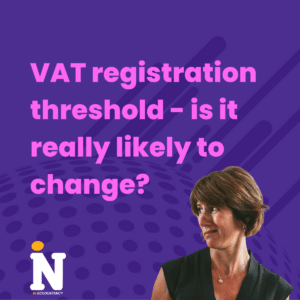How do you think the Autumn Statement 2016 stacks up? Stockport accountants, IN Accountancy, have provided an analysis of the Chancellor’s first budget, which sets out the government’s priorities and spending plans in the light of Brexit.
The New Chancellor
For the last six years, the government’s Budget and Autumn Statement have been synonymous with George Osborne – but as we all now know, the former Chancellor fell victim to Theresa May’s post-Brexit reshuffle. In fact, with his Tatton constituency likely to be impacted under the proposed boundary changes, our former leading man may well be considering a future outside politics.
So we welcome a new actor to centre stage: Philip Hammond, aged 60, father of three and MP for Runnymede and Weybridge since 1997. It’s fair to say that Hammond is not a man renowned for his charisma: ‘safe,’ ‘plodding’ and ‘risk averse’ are some of the kinder adjectives that have been used to describe the new Chancellor, a man apparently nicknamed ‘Spreadsheet Phil’ by his colleagues.
But it is to Hammond that the job of steering the UK economy through the Brexit negotiations and beyond has fallen and this was his first chance to communicate his plans to the public.
The Predictions
Much of the talk in the run up to this year’s speech featured commentary on, depending on which news outlet you believe, the “gaping hole” or “black hole” in the nation’s finances. Estimates of the amount needed to fill the gaping/black hole ranged from £25bn to £100bn. At the pessimistic end of the scale, the Financial Times reported an expected “£100bn black hole” with the National Institute of Economic and Social Research (NIESR) cheerfully predicting that, “tax rises will be needed to plug the gap and the middle classes face years of declining incomes.”
The middle classes certainly appeared to be in the firing line, with the Sunday Telegraph suggesting a “tax raid on middle-class salary perks.” The Chancellor was apparently set to target mobile phone contracts, health checks and gym memberships.
Nearly all the papers were predicting increased spending on the nation’s infrastructure, with a commitment to spending £1.3bn to ease road congestion more or less confirmed before the Statement. Similarly, there will be a pledge to invest an extra £2bn in scientific research by 2020 – something confirmed by the Prime Minister in a speech to the CBI.
The last word went to Paul Johnson, director of the Institute for Fiscal Studies. According to Mr Johnson the Chancellor had, “a very difficult task. The numbers are going to get worse – he’s going to be borrowing more than he wanted to and is going to be uncertain about exactly where we will be in four or five years’ time.”
The Chancellor’s Opening Remarks
Having been boosted the previous day by news that the Government borrowed £4.8bn less than expected in October, the Chancellor rose to speak at 12:40. He duly paid tribute to his predecessor and followed George Osborne’s lead by opening with good news.
The IMF had confirmed that the UK would be the fastest growing major developed economy in the world this year. The UK had “bounced back” from the recession and the economy had been “resilient” since the vote to leave the EU – something which demonstrated its “fundamental strength.”
Nevertheless, there were underlying problems, not least the productivity gap, with the UK lagging behind not just Germany and the USA but France and Italy as well. Philip Hammond declared that he was determined to build an, “economy that works for everyone,” that he would focus on the future and get the economy “resilient” and “match fit” for life outside the EU – and (as you’d expect from Spreadsheet Phil) that he would always maintain “fiscal discipline.”
The Numbers
The Chancellor opened the main body of his speech with the growth forecasts from the Office for Budget Responsibility (OBR). Growth would be 2.1% in 2016, followed by a fall to 1.4% in 2017 due to lower investment and weaker consumer demand. It was important to note, he stressed, that this was still equal to the growth forecast for Germany. Growth would then rise to 1.7% in 2018, 2.1% in 2019 and 2020 before falling back to 2% in 2021.
In total, growth would be 2.4% lower because of the uncertainty caused by Brexit and he admitted that the forecast carried a “higher degree of uncertainty” than previous forecasts. However, he still expected the UK economy to create a further 500,000 more jobs by 2021.
This meant, he said, that the Government would no longer seek a surplus by 2019/2020: instead, he would commit to balancing the budget “as soon as possible.” This – along with a commitment to public sector net debt decreasing as a percentage of GDP and a cap on welfare spending – would be one of his three fiscal rules.
Government Borrowing
The OBR forecasts for Government borrowing showed a steady fall, although the Chancellor conceded that debt would now rise as a percentage of GDP in 2017/18 before falling back again.
Government borrowing is forecast to be £68.2bn in 2016/17, £59bn in 2017/18 and then gradually reduce to 17.2bn by 2021/22.
Debt as a percentage of GDP will be 84.2% this year, but will rise to 90.2% in 2017/18 before starting to reduce again.
Having conducted that “sober analysis” – and once more lamented the weakness of UK productivity – the Chancellor then turned to the specific measures of his first Autumn Statement.
The Nation’s Infrastructure
Investment in infrastructure was a major recurring theme in Mr Hammond’s speech, with the Chancellor effectively freed from his predecessor’s drive towards a budgetary surplus… in the short term, at least. Further borrowing was, Mr Hammond said, a necessity in order to encourage increased productivity. The following specific measures were then announced.
| What | A new £23bn National Productivity Investment Fund |
| When | Immediately |
| Comment | Much of this had been trailed well in advance. The Chancellor stated that investment in infrastructure would rise from its current 0.8% of GDP to between 1% and 1.2% from 2020 – although this will still leave the UK way behind developing economies such as China and India. The measures announced in the Autumn Statement confirmed the extra £1.3bn for the nation’s roads – with a specific commitment to reduce “pinch points” – and the Prime Minister’s announcement of an extra £2bn for scientific research. |
| What | An extra £1bn investment in “digital infrastructure” and business rate relief for infrastructure investment |
| When | Over the next five years |
| Comment | The Chancellor confirmed his determination to make the UK a “world leader in 5G” digital technology, plus 100% business rate relief for full-fibre infrastructure investment. Let’s hope he delivers as there are still far too many parts of the UK where internet connections have barely progressed since the days of dial-up… |
| What | A £2.3bn investment into a Housing Infrastructure Fund and an extra £1.4bn for “40,000 affordable homes” |
| When | Over the next five years |
| Comment | These two measures have been taken together as the Chancellor clearly sees the availability of affordable housing as a key part of the national infrastructure. The Housing Infrastructure Fund is intended to pave the way for up to 100,000 new homes and he confirmed that George Osborne’s ‘Help to Buy’ schemes would continue as he pledged “a housing market that works for everyone. |
Personal Taxation and Allowances
| What | An increase in the tax free personal allowance to £11,500 and the higher rate threshold to £45,000 |
| When | From April 2017 |
| Comment | The Chancellor also confirmed the commitment to raise the personal allowance to £12,500 by the end of the parliament and reaffirmed the promise to raise the starting point for higher rate tax to £50,000. The plan is then for the allowances to rise in line with inflation, at the discretion of the then Chancellor. |
| What | A taxation review of people who essentially do the same job but are taxed differently |
| When | Some time next year |
| Comment | There is little detail but the Chancellor wants to “keep the taxation system fair between individuals and companies.” This seems to clearly be a measure which will target people who essentially do the same job but are taxed in different ways, with the spotlight on those who set up a limited company. For example, you might have an IT specialist who is self-employed and is taxed accordingly, whilst another operates as a limited company and is paid salary and dividends. It is difficult to see this loophole surviving the review! |
| What | A reduction in the flexibility of salary sacrifice schemes |
| When | From April 2017 |
| Comment | An end to the ‘middle class tax perks’ which had been well trailed ahead of the Autumn Statement. Childcare, the cycle to work scheme, ultra-low emission cars and pensions will be excluded from the changes, but it does look like sacrificing salary (and thereby saving NI contributions) in exchange for gym membership, dental plans and the like is almost certain to go. Arrangements in place before April 2017 will be protected until April 2018 and arrangements for cars, accommodation and school fees will be protected until April 2021.
|
| What | Strengthening tax avoidance sanctions and deterrents |
| When | Ongoing |
| Comment | With a degree of ambiguity, the Chancellor said that, “we must be constantly alert to new threats to our tax base.” He seemed to have both multinationals and individuals in his sights here, as he announced that large companies, “will always pay tax in years when they make profits.” There will also be new penalties for anyone who has enabled another person to use tax schemes that HMRC subsequently defeat. |
| What | The Chancellor announced plans to reduce the rate at which benefits are withdrawn when people start work |
| When | From April 2017 |
| Comment | Like his predecessor, Philip Hammond stressed that it must always pay to work and this change to Universal Credit will “benefit 3m low income households.” The move will see taper relief reduced from 65% to 63%, meaning that benefits will be withdrawn at a rate of 63p for every pound of net earnings. |
Pensions and Savings
| What | The introduction of a new savings bond |
| When | Spring 2017 |
| Comment | Clearly, Philip Hammond recognised the impact that low interest rates have had on savers. He proposed that the new bond – introduced through National Savings and Investments – would pay a rate of 2.2% for three years. At the moment, he is suggesting a maximum investment of £3,000 into the bond, but you’d suspect that this initial low level may steadily increase over the coming years. |
| What | The ‘triple-lock’ on pensions is to stay |
| When | For now… |
| Comment | The ‘triple-lock’ was introduced by the Coalition government in 2010 and was a guarantee to increase the state pension every year by the higher of inflation (CPI), average earnings or a minimum of 2.5%. However, the next spending review is to include a review of the needs of our ageing population, which could see the ‘triple-lock’ come under threat. |
| What | Money purchase pension contribution allowances are to be reduced |
| When | From April 2017 |
| Comment | The amount you can save into a pension – once an individual has withdrawn taxable income – has been reduced from £10,000 to £4,000 to clamp down on those seeking ‘double tax relief.’ The move will hit thousands aged 55 and over who have used George Osborne’s ‘pensions freedom’ and taken cash from their pension pots. Although the Government will ‘consult’ on the details, the Chancellor looked like someone who had made his mind up… |
| What | Consultation on tackling pension scams |
| When | Further details to be announced shortly |
| Comment | After a well publicised campaign targeting pension cold callers, the government has agreed to address the issue. Specific options detailed for consideration include “banning cold calling in relation to pensions, giving firms greater powers to block suspicious transfers and making it harder for scammers to abuse ‘small self administered schemes’.”
|
| What | Update to the ISA limit |
| When | From April 2017 |
| Comment | As previously announced, the ISA limit will increase again next year. The amount each individual can save in a tax year will rise from £15,240 to £20,000, from April next year. |
Business and Business Taxation
| What | Corporation tax will be reduced to 17% |
| When | By 2020 |
| Comment | The Chancellor confirmed that he would “stick to the road map” outlined in the March Budget, to make the UK “the number one destination for business.” Seeking to give businesses some certainty, he confirmed that corporation tax would come down to 17% (from the current 20%) and that the current business rates reduction package would remain in place. |
| What | Employer and Employee NIC levels are to be aligned |
| When | From April 2017 |
| Comment | “From April 2017, we will align the employer and employee NI thresholds,” said the Chancellor. This means that both employees and employers will start paying National Insurance on weekly earnings above £157. |
| What | Rural rate relief increased to 100% |
| When | From 1st April 2017 |
| Comment | The Chancellor took the opportunity to remove the inconsistency between rural rate relief and small business
rate relief by doubling the rural rate relief to 100%. The move could be worth nearly £3,000 a year to those businesses set to benefit.
|
| What | Tackling the inappropriate use of VAT flat rate scheme |
| When | From 1st April 2017 |
| Comment | A new 16.5% rate of VAT will be introduced for businesses with limited costs, such as many labour-only businesses. The goal is to level the playing field for all, whilst attempting to maintain a level of accounting simplification for the small businesses
that use the scheme as intended. |
Other measures
| What | The Chancellor announced that letting agents will no longer be allowed to charge up-front fees to tenants |
| When | “As soon as possible” |
| Comment | This move was clearly portrayed as one designed to help those renting in the private sector and will – in theory – benefit 4.3m private tenants. It certainly depressed shares in estate agents on Wednesday morning, but will it really be effective? There are suggestions that letting agents will simply pass the costs on to landlords, who will in turn pass the costs on to tenants via higher rents. Only eight weeks ago, housing minister Gavin Barwell publicly dismissed the proposal as a “bad idea” and Theresa May voted against the same proposal in 2014. Several commentators were sceptical when the measure was trailed: the Institute for Economic Affairs said, “This is skirting round the issue of the housing crisis. [The Chancellor is] avoiding actually addressing the issue.” |
| What | The National Living Wage will increase to £7.50 per hour |
| When | From April 2017 |
| Comment | Another measure which was much trailed and heralded by the Chancellor as a move which would give someone in full time employment, “a £500 a year pay rise.” |
| What | The planned fuel duty rise was cancelled |
| When | Previously announced for April 2017 |
| Comment | It’s perhaps difficult to call it a “planned fuel duty rise” when it has now been cancelled for the 7th year in a row! The Chancellor said that this move would save an average motorist £130 per year, while a van driver would save £350 per year. |
| What | Insurance Premium Tax will rise from 10% to 12% |
| When | From June 2017 |
| Comment | A measure which was quite plainly aimed at raising the revenue the Chancellor will need. However, for motorists at least, it will be offset by a crackdown on compensation claims for whiplash injuries, which he estimated will save the average motorist £40 per year on premiums. |
Other measures (continued)
- The Chancellor announced a doubling of the 15 hours per week of childcare from September 2017, meaning that working families will be eligible for 30 hours a week of free childcare for all 3 and 4 year olds.
- Following his predecessor’s lead, the Chancellor confirmed his ongoing support for the Help to Buy: Equity Loan Scheme and the Help to Buy ISA.
- From April 2017, the government will reform the rules covering ‘off-payroll’ working. The onus will now be on the body paying the worker’s company to pay the correct tax. The 5% tax-free allowance will also be removed for those working in the public sector.
- The government will invest £170m in flood defence and resilience measures. £20m of this investment will be for new flood defence schemes.
- £102m in LIBOR fines on the banks will go to military and emergency services charities and £3m from the ‘tampon tax’ will be given to Comic Relief, specifically for women’s charities.
- While the departmental spending plans will stay in place, an extra £500m will be given to the Justice Ministry to fund 2,500 extra prison officers.
- There was more devolution for London with the capital receiving £3.15bn as its share of the national affordable housing funding – to deliver more than 90,000 homes – and control over its own adult education budget.
- “Devolution remains at the heart of [our] approach to local growth,” said the Chancellor, as he confirmed a new ‘city deal’ for Stirling, as well as deals with Swansea, Edinburgh, North Wales and the Tay cities.
Conclusions
Having delivered the details of his first Autumn Statement, the Chancellor said he had one final measure to announce. It would also be his last Autumn Statement. “No other major economy,” he said, “has two financial statements in a year.”
So, from 2017, the Budget will move from the Spring to the Autumn. However, the Chancellor also said that a new Spring Statement will take place, responding to OBR forecasts, which does sound suspiciously like we are still going to receive two financial statements…
But, other than that, the new Chancellor was refreshingly direct: he spoke for 50 minutes (by rough calculation and memory of past years, about ten minutes less than an average George Osborne statement) but he managed to pack in plenty of detail.
Clearly, to echo Paul Johnson’s comment at the beginning of this report, the economic numbers don’t look good and there is considerable uncertainty about the next five years. But that is not purely down to Brexit: as George Osborne so often stressed, the UK cannot be immune to world events and 2017 promises to be every bit as uncertain as 2016 has been, with President Trump being sworn in and elections in both France and Germany.
For now, though, as Philip Hammond declared, in the UK, “We have made our choices. We have set our course and we are determined to build a country that works for everyone.”
Let’s see how he gets on…






